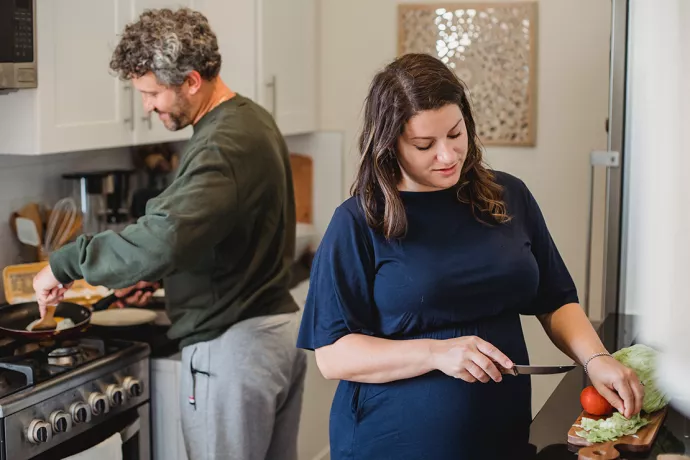
Men shared more equally in housework early in pandemic, UTM study reveals
COVID-19 continues to fundamentally disrupt our way of life, and many observers are concerned about its current and long-term impacts on gender equality.
In media reports, research papers and public opinion surveys, we hear warnings from economists, government ministers and humanitarian leaders about the pandemic’s regressive effects on women’s independence, freedom from violence, and workforce participation. By exacerbating long-standing inequalities, the pandemic could, as the United Nations Deputy Secretary-General has cautioned, set women’s rights back by decades.

And yet, new research by University of Toronto Mississauga sociology professor Melissa Milkie offers a glimmer of hope in one key area: how women and men split up labour at home. Milkie is co-author of the study published in November 2020. Conducted with UTM sociology postdoctoral fellow Casey Scheibling and McMaster University social sciences professor Kevin Shafer, the paper reveals that during lockdown in the first wave, men shared more equally in housework and childcare tasks than they did prior to the pandemic.
“The pandemic is showing potential to be an equalizer,” says Milkie, whose research focuses on structural and cultural changes in gender, work and family life over recent decades. “Our findings based on data from very early in the pandemic show that if fathers are in the home more and work allows them to be flexible, they are more likely to be able to step up to the kinds of demands that families have.”
The study is based on the results of a survey conducted last May featuring the responses of 1,234 male-female couples across Canada (except for Nunavut) with at least one child. The participants were asked about their perceptions of the sharing of household chores and childrearing both before and after the pandemic. The researchers took into account mitigating factors such as the parents’ work arrangements and household income.
First, the percentage of respondents indicating that the fathers did at least half of the housework and childcare increased after the pandemic hit. When it came to household tasks specifically, an increase occurred in meal preparation: pre-pandemic, 46 per cent said this work was shared 50-50 or that fathers did more than mothers, but after the outbreak, that number rose to 50 per cent. There were similarly small shifts towards equal performance of meal clean-up and housecleaning, and larger shifts for shopping.
Changes to handling childcare responsibilities also revealed a shift towards equal task sharing. The biggest gain emerged in the area of organizing and planning children’s activities—46 per cent of respondents indicated this was an equally shared task or that fathers did more than mothers before COVID-19, while 57 per cent said this was the case during the pandemic. Smaller increases occurred for reading, monitoring, talking/listening and the physical care of young children.
To contextualize these shifts in fathers’ contributions to the domestic division of labour, the researchers took into consideration the needs exposure hypothesis. It posits that with more fathers spending more time at home during the pandemic due to remote work, reduced work, unemployment, and less commuting and leisure time, they become more attuned to the needs of their families.
“Fathers may be doing more proportionally than the past because they are seeing their family more, and so feel compelled to contribute,” says Milkie, noting that this hypothesis is borne out by research into the effects of paternal leave and flexible work policies.
Milkie’s research results mirror similar studies conducted early in the pandemic in the United States, the United Kingdom and Australia. But her optimism is tempered by recent trends showing declines in women’s workforce participation as they decrease their hours or quit their jobs to care for their children learning at home.
“A lot would have to change in the way we organize work, school and child care to make true progress on gender equality in the home,” Milkie says. “We need to address the structural inequalities that relegate more women than men to low-status, low-paying jobs. We also need policies that allow fathers to be more active participants in their families.”
